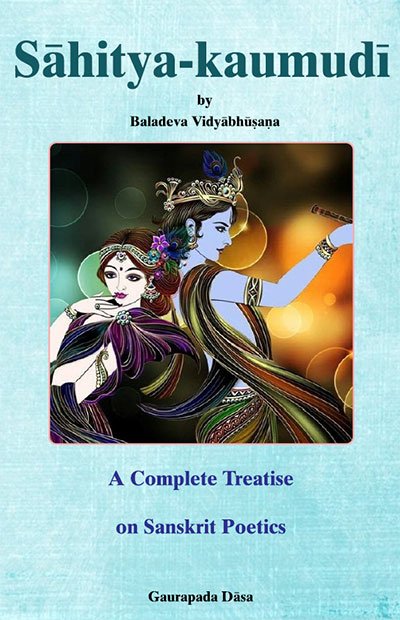Sahitya-kaumudi by Baladeva Vidyabhushana
by Gaurapada Dāsa | 2015 | 234,703 words
Baladeva Vidyabhusana’s Sahitya-kaumudi covers all aspects of poetical theory except the topic of dramaturgy. All the definitions of poetical concepts are taken from Mammata’s Kavya-prakasha, the most authoritative work on Sanskrit poetical rhetoric. Baladeva Vidyabhushana added the eleventh chapter, where he expounds additional ornaments from Visv...
Text 2.1
शब्दार्थौ काव्यम् इत्य् उक्तं तयोः क्रमेण स्वरूपम् आह,
śabdārthau kāvyam ity uktaṃ tayoḥ krameṇa svarūpam āha,
It was said that sounds (śabda) and meanings (artha) together are poetry (1.6). Now he discusses the natures of both, one after the other:
syād vācako lākṣaṇikaḥ śabdo’tra vyañjakas tridhā ||2.6ab||
syāt—is; vācakaḥ—literally expressive; lākṣaṇikaḥ—figurative; śabdaḥ—a word; atra—in this; vyañjakaḥ—suggestive; tridhā—threefold.
In poetry, there are three kinds of words (śabda): vācaka (literal), lākṣaṇika (figurative), and vyañjaka (suggestive).
atra kāvye śabdas tridhā, upādhi-traividhyād eva.
There are three kinds of words because there are three kinds of characteristics.
